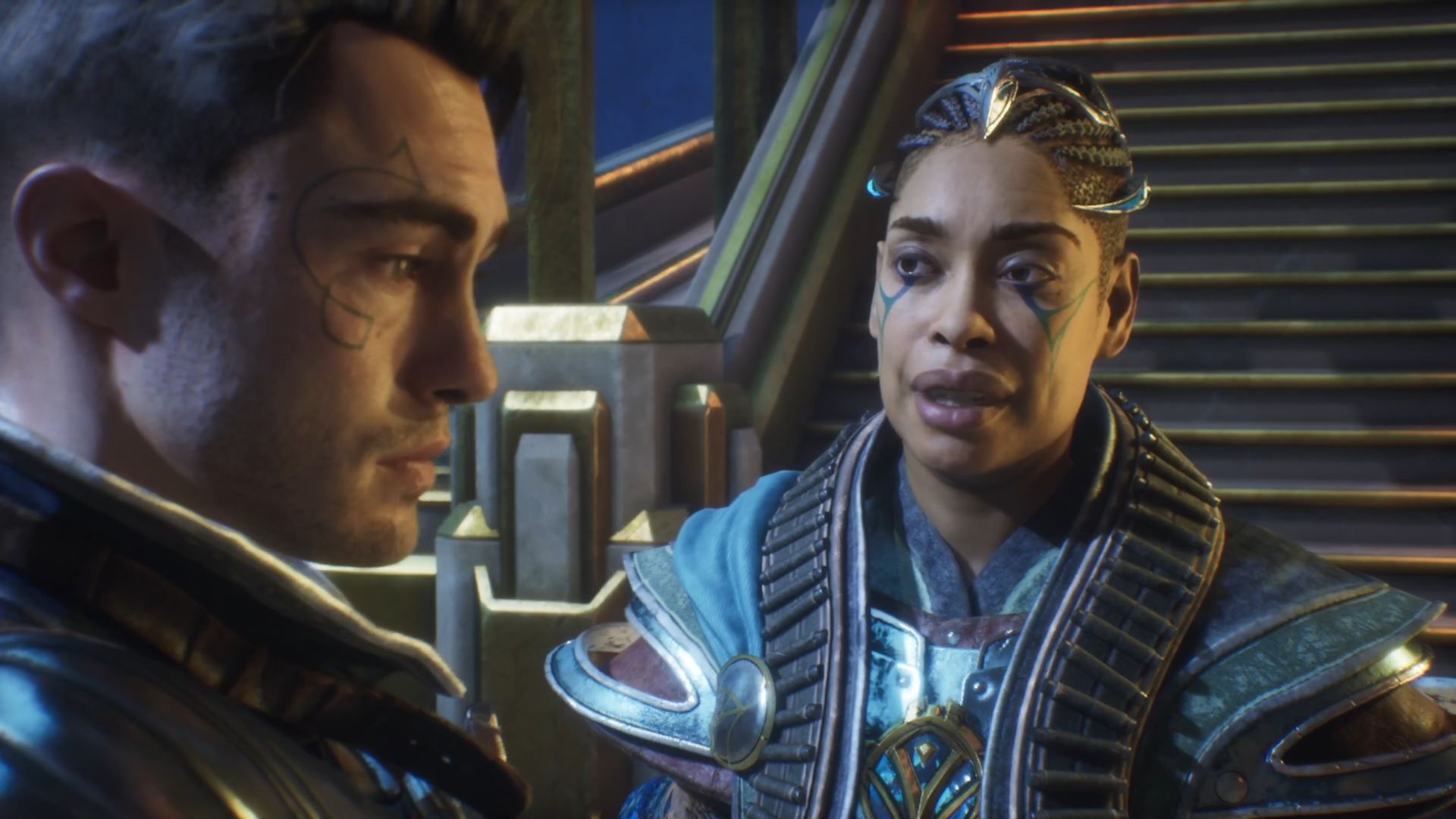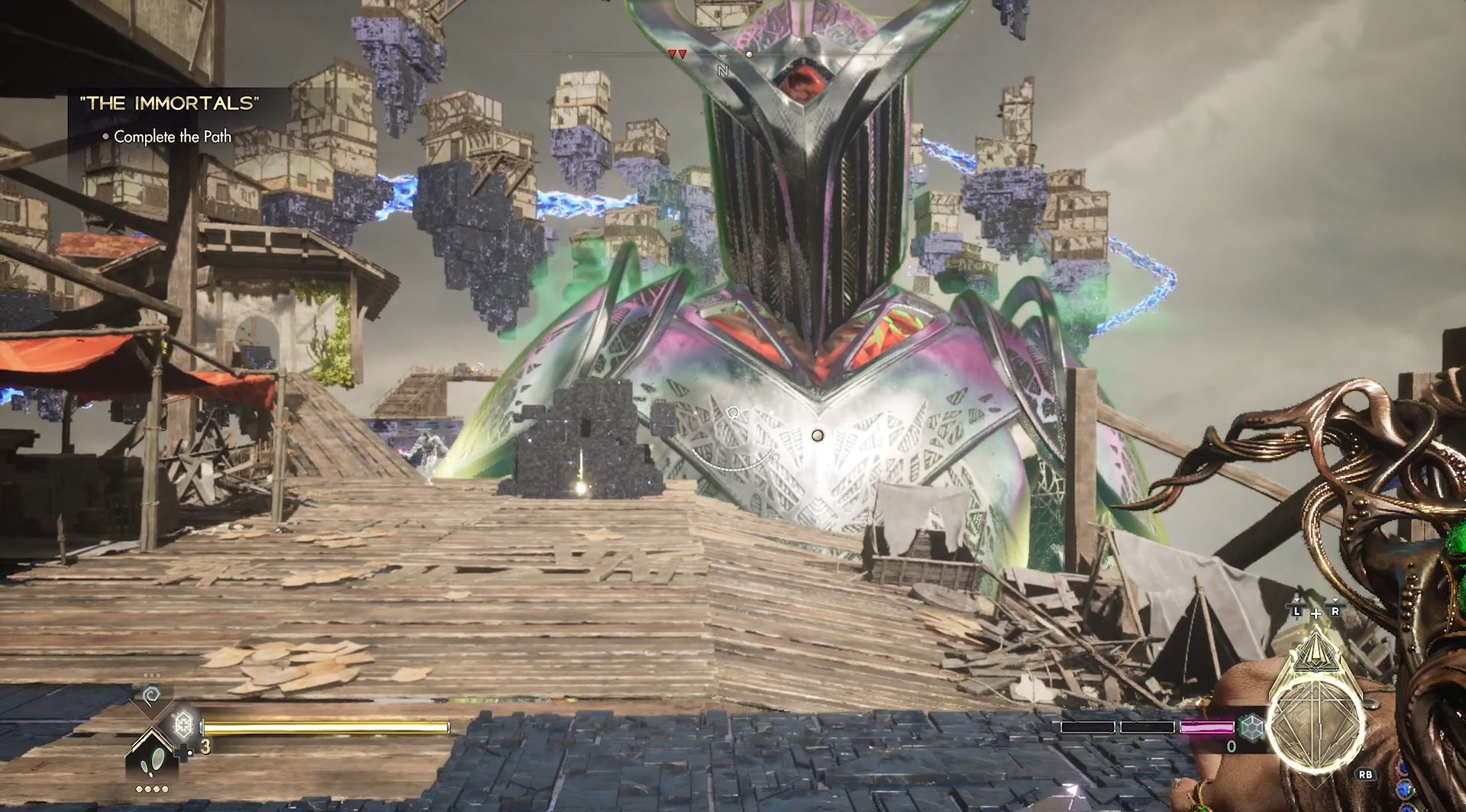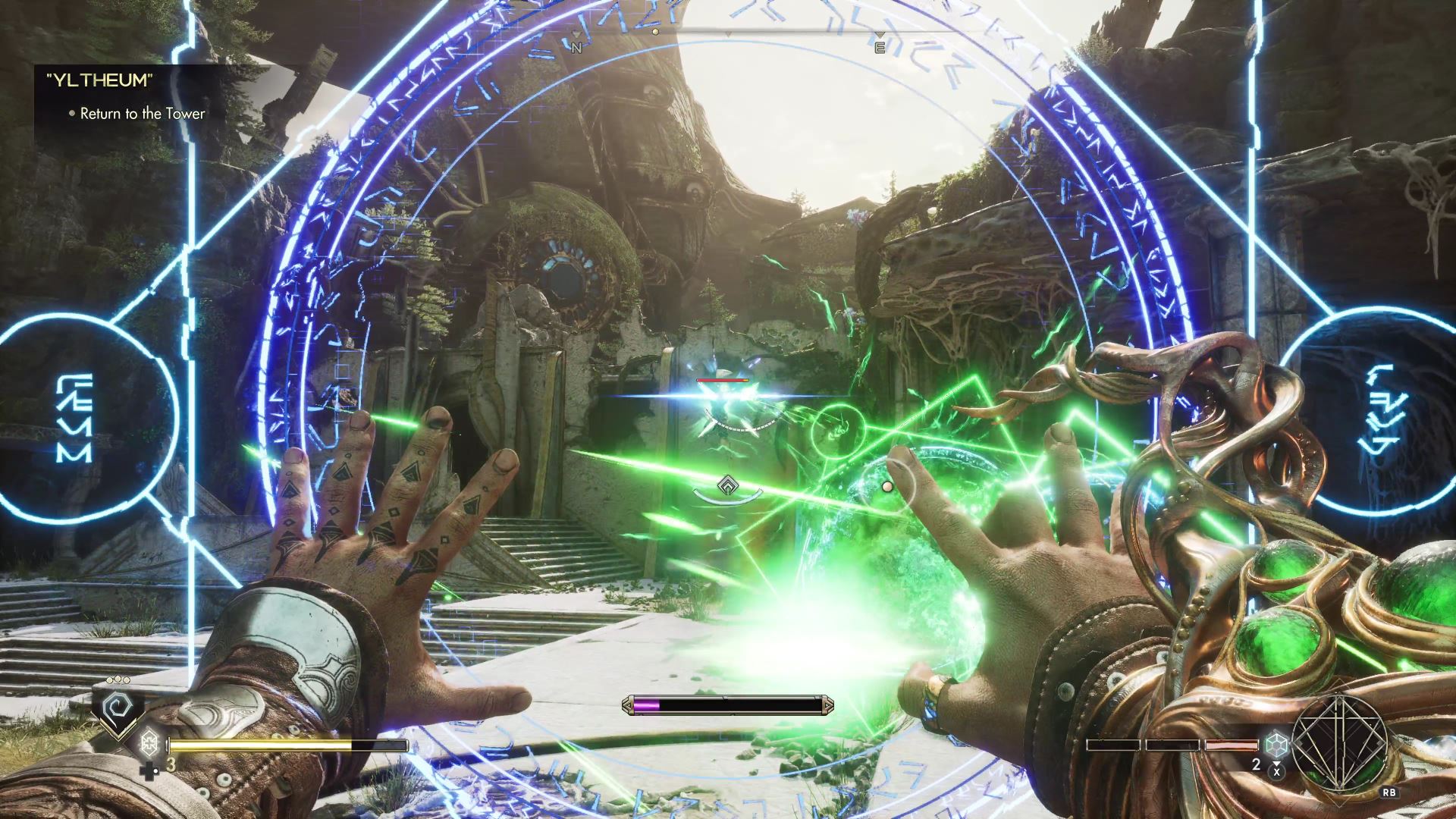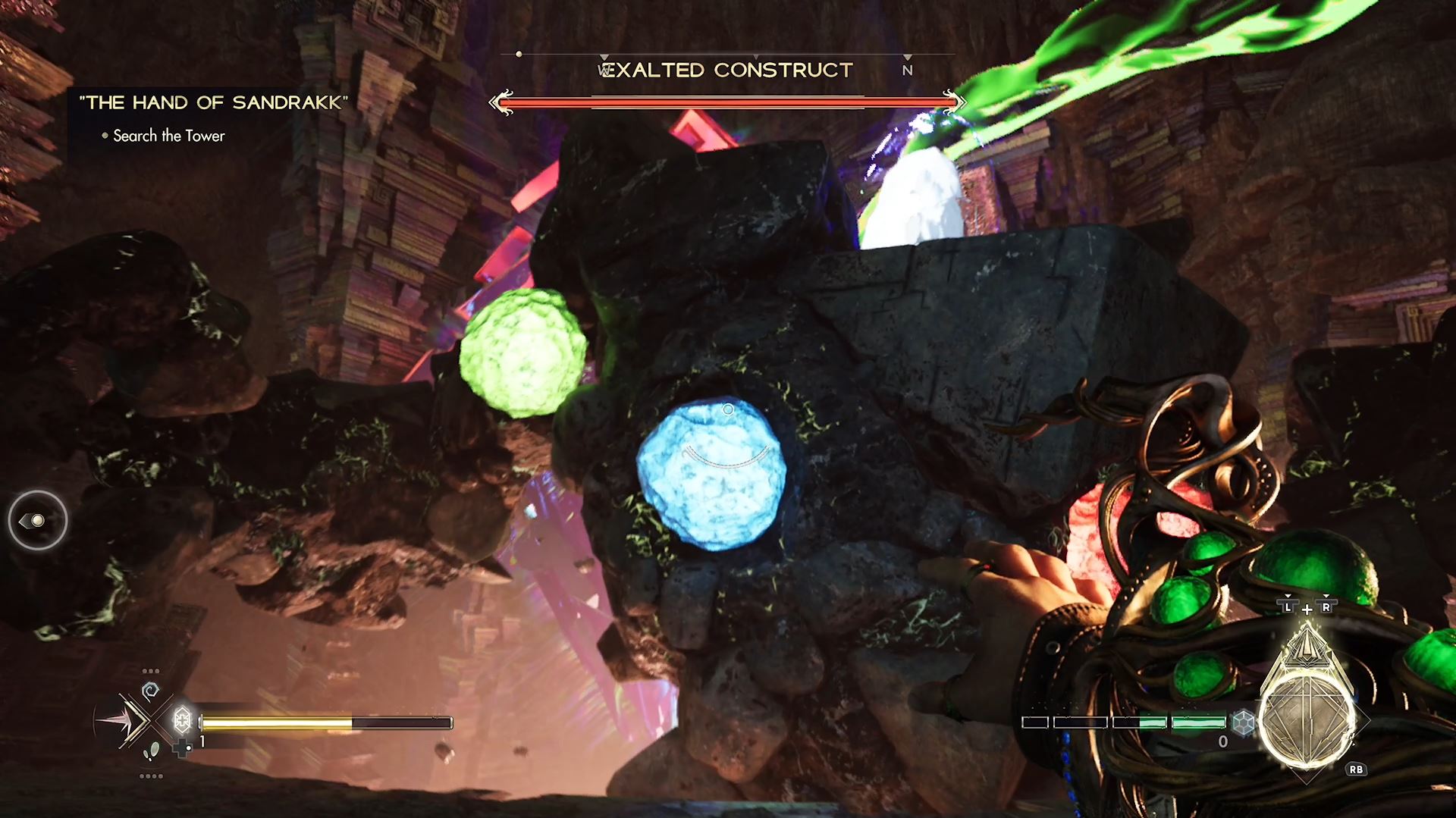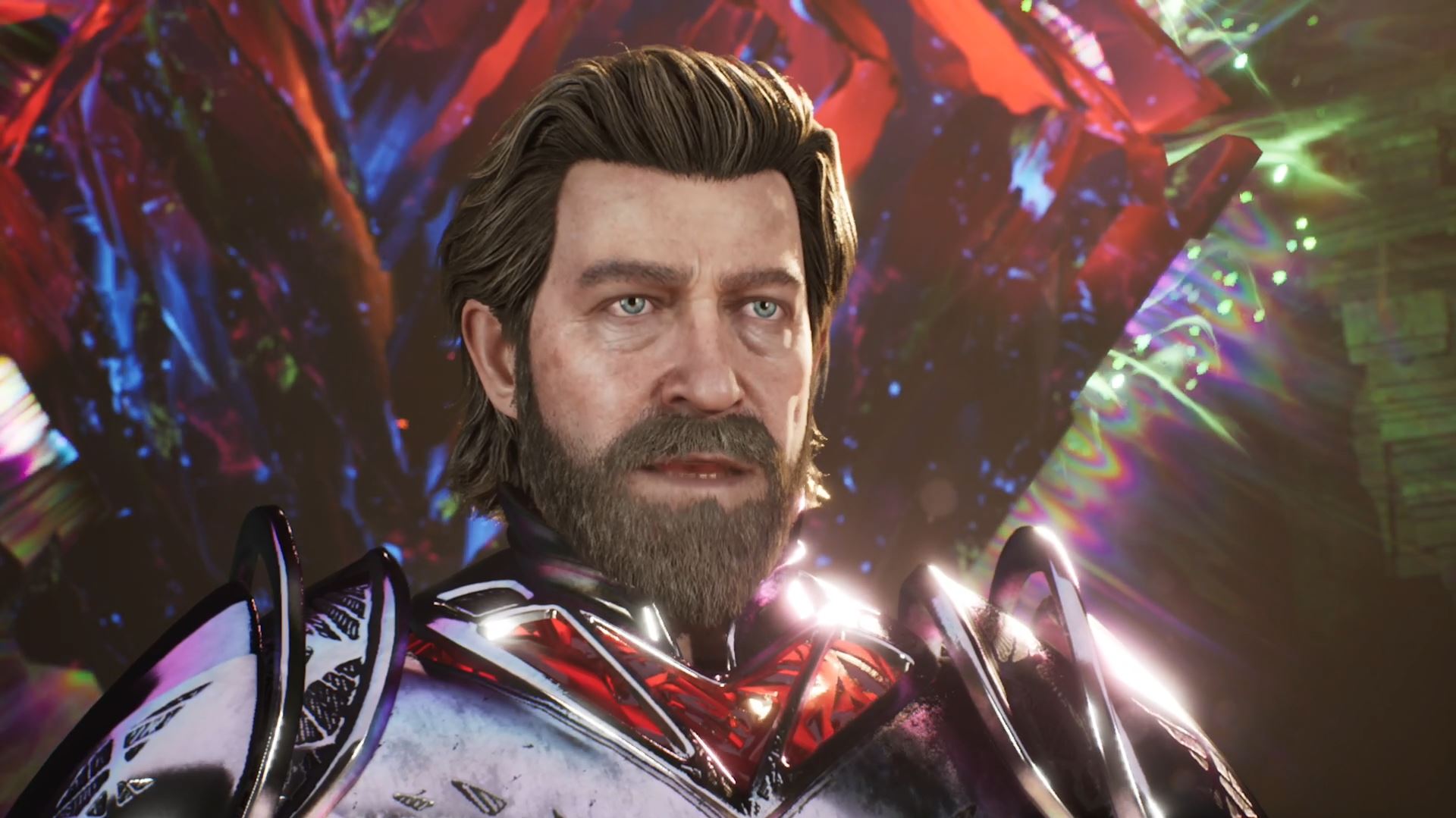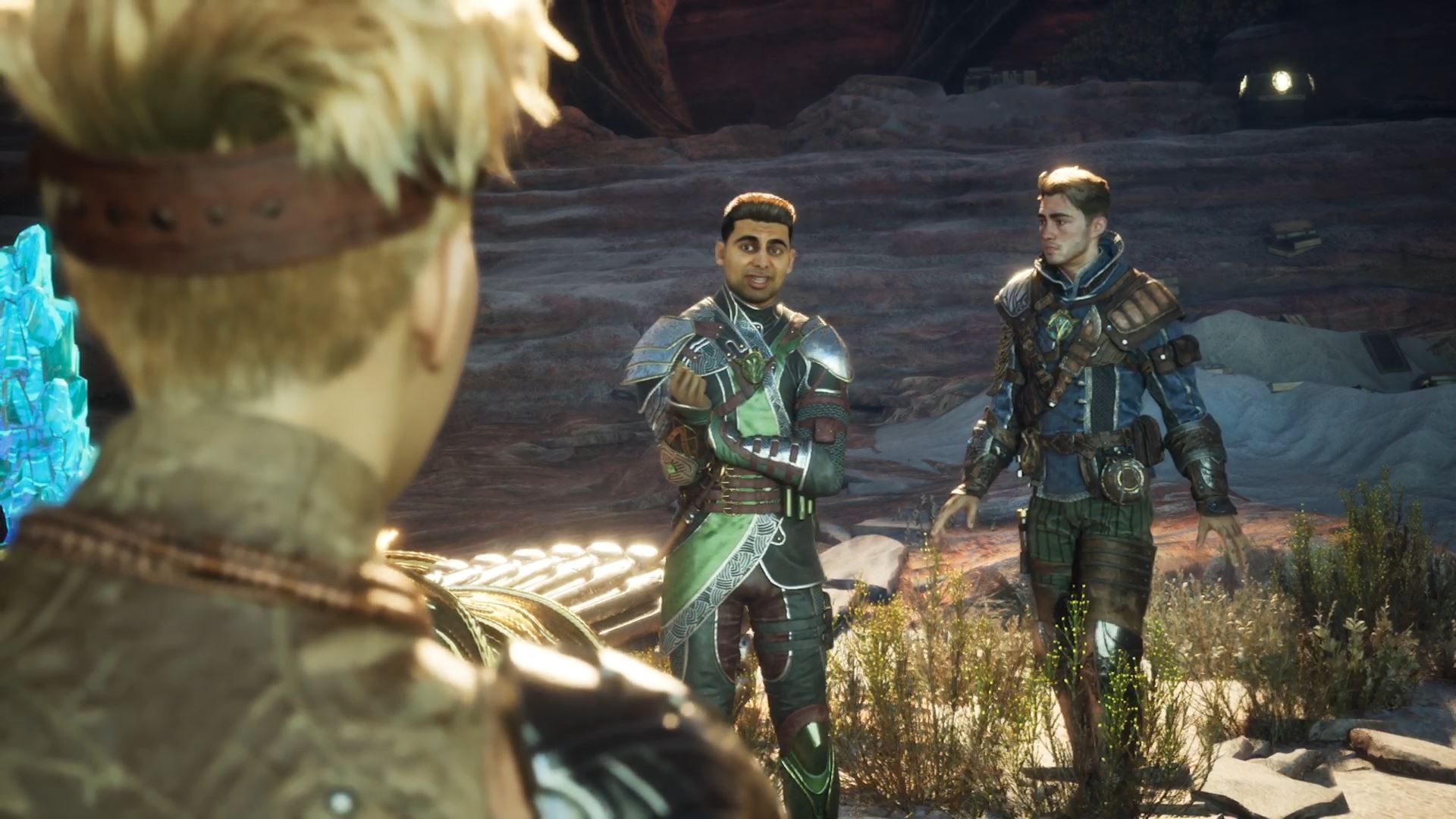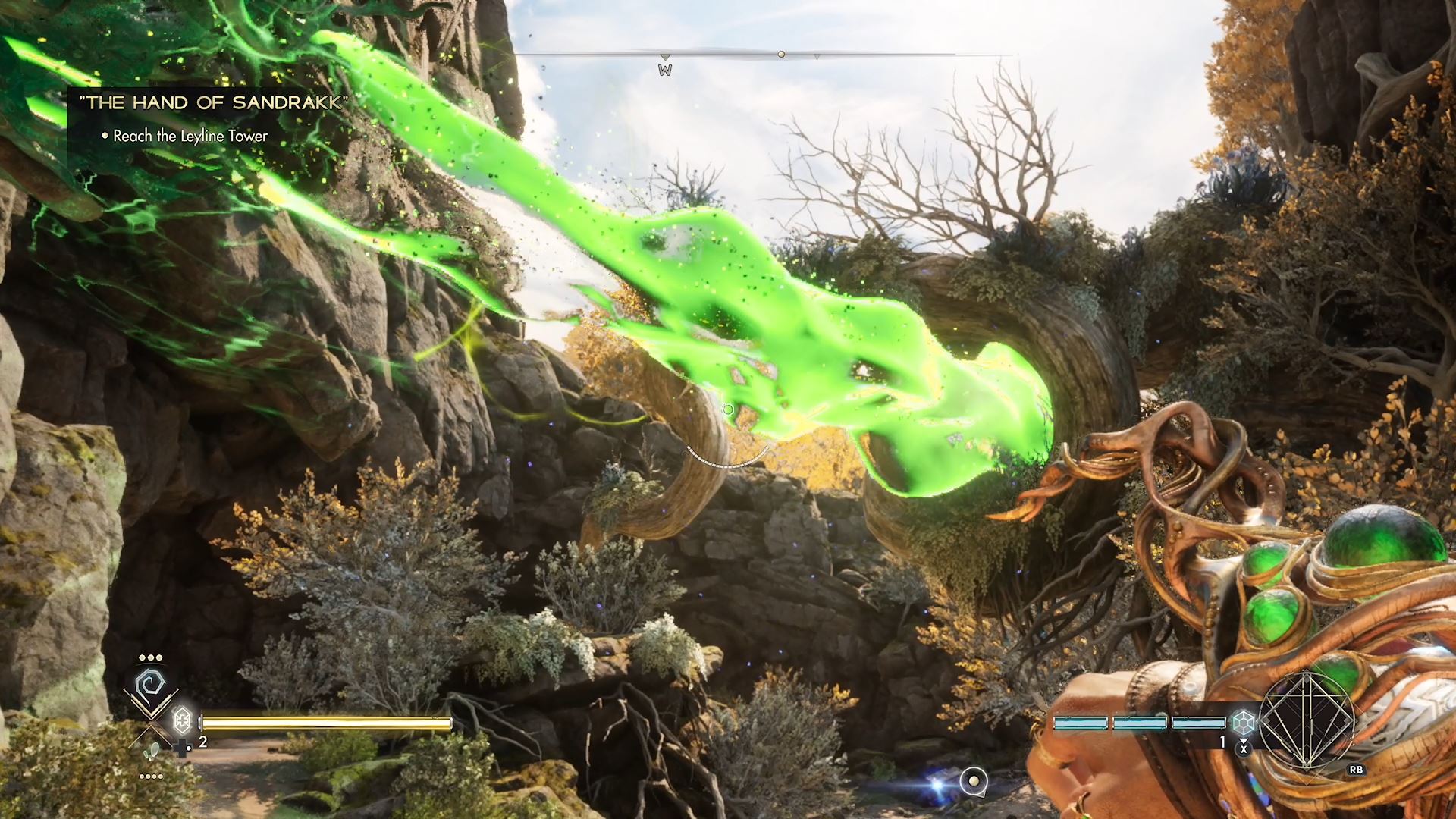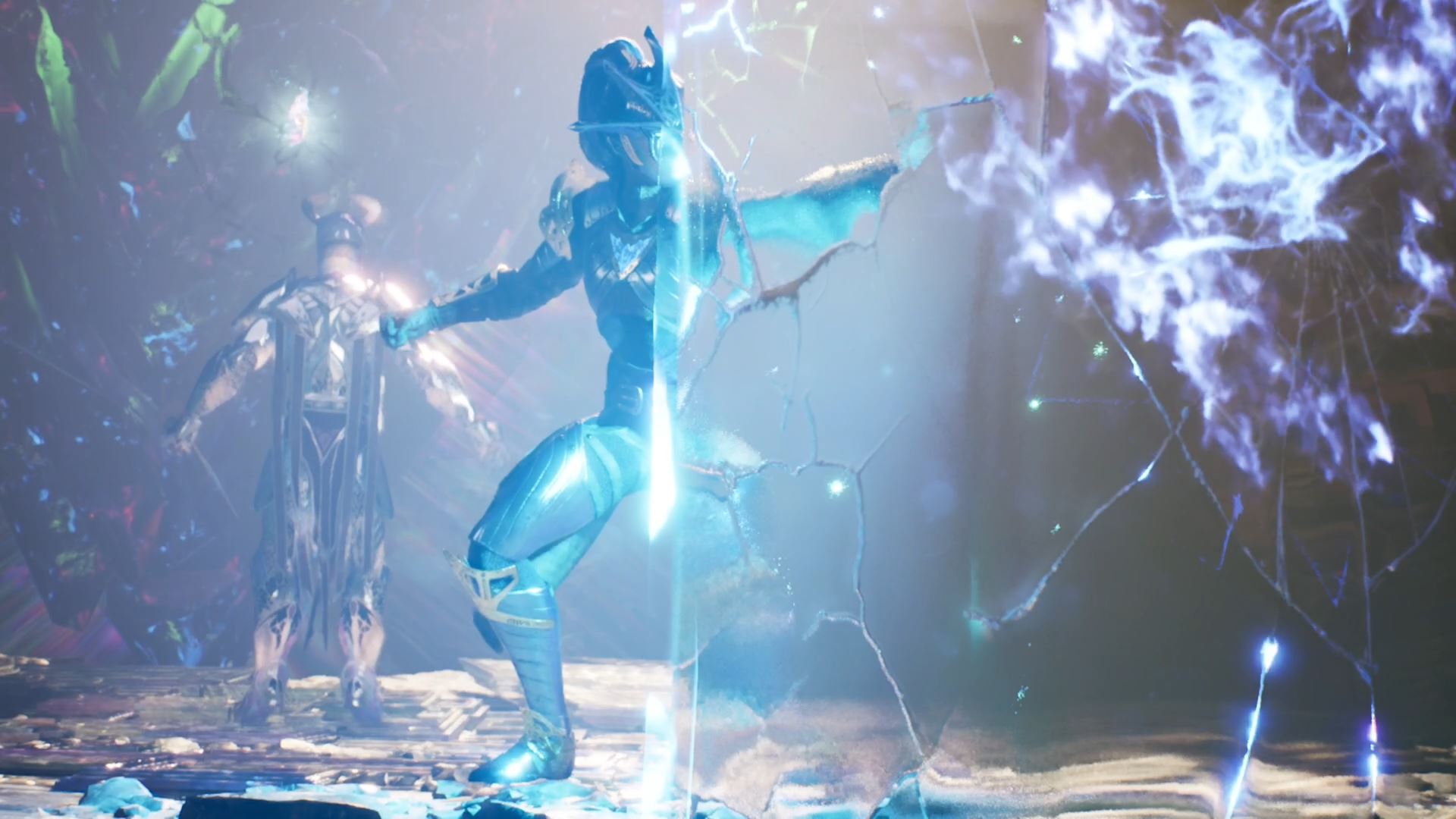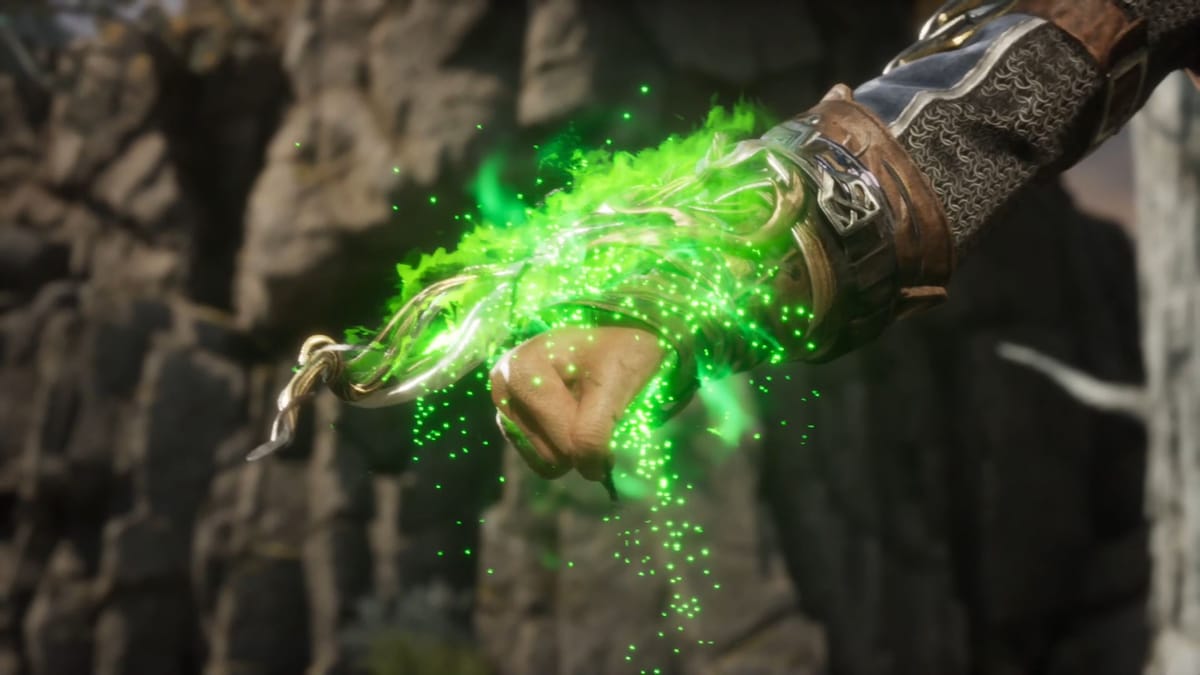
Back in May I was given the opportunity to fly out to Redwood City, CA, to the headquarters of Electronic Arts, publisher of huge franchises like Madden, Mass Effect, Dragon Age, and the Star Wars Jedi games. Why was I there? Well, just five years prior, a new studio had been born, a melting pot of talent from various other studios and publishers, and they had something incredible to show us. Ascendant Studios, headed by Bret Robbins (Dead Space and Call of Duty WWII), had been working hard on a new IP called Immortals of Aveum, a first-person magic shooter that was just as inspired and ambitious as its creators.
Well, now the game is finally here after a short delay. I’ve had the pleasure of jumping back into the world of Aveum over the last week. Immortals of Aveum is a first-person magic shooter set in an original fantasy universe that is engulfed in a battle for the ultimate power, control over all magic in Aveum. You play as Jak, a street rat turned battlemage (Magnus) after tragedy hits his hometown of Seren. However, Jak is no ordinary battlemage. He is a Triarch, meaning he is able to harness the power of all three colors of magic: red, green, and blue. Most Magni are lucky to be able to harness the power of even a single color, and the Lightless unfortunately have access to none. Triarchs are rare and come with their own challenges to overcome.
After making it through the Immortals selection process, Jak is immediately thrown into the thick of the conflict against Sandrakk, the Magnus who is trying to absorb all of Aveum’s magic. The story that unfolds is full of twists and unexpected turns. When I thought I had the plot all figured out, a curveball would be thrown my way, and, like Jak, I’d be struggling to see how it would all finally come to a close. When I finally reached the end, I’d been sent on one hell of a rollercoaster of emotions, having been jostled around by a gripping story and a beautiful, yet treacherous world.
The cast of characters you meet really help to make the story, and the talent behind each character has done a remarkable job bringing these characters to life. The Immortals are led by the Grand Magnus, General Kirkan (Gina Torres), a 40-year veteran of the Everwar and a Diarch, meaning she can actually harness two colors of magic, green and blue. Jak’s fellow Immortals are the witty Devyn (Antonio Aakeel), who wields green magic, and the strong and unforgiving Zendara (Lily Cowles), who wields red magic. These two regularly accompany Jak out in the field in their efforts to stop Sandrakk (Steven Brand), another Triarch. They also have to contend with The Hand, Sandrakk’s second-in-command who strikes with her blue magic quickly and quietly.
Throughout the story, the relationships between these characters evolve and have twists and turns of their own. I loved getting to know them all and seeing how they interacted with each other, particularly Jak and Zendara. Zendara’s hard exterior was constantly prodded at by Jak’s… well, just Jak being Jak. Unfortunately, these relationships don’t get explored too deeply, though they do still leave a lasting impression.
The story does leave a little to be desired. It could have used more filler details, particularly through conversations between characters or monologues by Jak, who barely speaks outside of cutscenes. The game does fill in some gaps. You can find pieces of lore scattered throughout the world, and your journal fills up with information with every interaction, further enhancing the story details. You can also seek out some of the characters for additional conversation opportunities, granting you an achievement if you manage to complete all of them.
Aveum is divided into 5 realms; Lucium, Rasharn, Kalthus, Oremen, and K’Ley. Each kingdom features unique landscapes, structures, and cultures. Their differences are evident when looking at the attire of people from each area. Rasharnians wear shiny, metal suits of armor, while Lucians have a more modern fantasy look, for example. We only get to visit a few of the realms as the other two have been devastated by the Everwar and are barely habitable at this point.
This isn’t an open world game. Instead it’s structured more like Star Wars Jedi: Fallen Order with more linear pathways and branching paths for further exploration. The map of each area also resembles the map from Fallen Order, showing you your route as well as highlighting points of interest. You unlock fast travel portals throughout the game that allow you to jump to any place in the world you’ve visited, making it easier and more convenient should you want to go back to find all the secrets in each area.
The three colors of magic flow throughout Aveum through the leylines, with each color taking on different forms. Each magic type is controlled by a sigil that, when equipped, allows Jak to learn a number of attack, utility, and defensive spells. Up to three can be equipped at a time, one for each color, and they can also be upgraded at forges or switched out for stronger sigils that you find in golden chests or receive as a reward from boss fights. You switch between sigils the same way you swap weapons in Call of Duty, by pressing Y/Triangle on your controller. The design of the sigils depends on the type of magic it controls. Blue sigils look more elegant, red sigils look angry, and green sigils combine the two.
We start off with blue magic, accurate and ranged attacks, much like using a designated marksman rifle. These magic attacks are semi-automatic with deadly accuracy at mid to long range, though are still very viable in close encounters as well. Blue magic is also used to summon a shield to block incoming attacks, though it does have a limit and will break if it takes too many hits. The second sigil Jak acquires is to harness red magic, which Jak says “feels angry”. Red magic is particularly violent, representing more explosive attacks, like blastwaves and shotgun blasts. The third color is green magic. Attacks of this color are like using a submachine gun, being effective at close to mid range with a fully automatic rate of fire. Green magic also gives Jak the ability to animate specially marked objects in the environment to create new pathways.
Sigils also control more powerful spells called Furies that do more damage, affect time, or hold enemies in place for more devastating attacks. Furies require mana, which you get more of as the game progresses. When you’re out of mana, you can replenish it using Mana Crystals, although a small amount of mana is also regenerated over time. However you’ll only get one bar of mana back and regeneration is slow. Mana Crystals have a chance of dropping from defeated enemies but can also be found in breakable chests. These chests can be found virtually anywhere – on ledges, around corners, and tucked into and under structures – so replenishing Mana Crystals, as well as Health Crystals, is fairly easy.
You’ll also equip Totems which grant you control abilities. A blue Totem gives you the Lash ability, which you can use to pull lesser enemies towards you, pull them off ledges (which is very satisfying), or bring them within range of Strikes. It can also be used to pull you towards larger enemies if you want to unleash Furies on them or land a decisive melee hit. Limpets are small blobs of green magic that you can use to slow down enemies, giving you time to heal, recharge your mana, or just to take a breather during a big fight. Limpets are also used to solve puzzles to slow down fast-moving objects. The red Totem gives you the Disrupt ability, which is a beam of Red magic that stuns the target. It has the power to disrupt (as the name implies) spells that opponents are trying to cast, triggering a Spellbreak that damages the caster if timed correctly.
There are also eight augments you’ll unlock throughout the game, enhancing your Totem abilities and giving you new ways to interact with the world around you. For example, you can acquire the Blink augment, which allows you to perform a quick dodge to jump away from enemies and create some distance, Grapple enhances the Lash ability, allowing you to traverse the world in new ways, allowing you to uncover even more secrets, and Refract is an upgrade for Disrupt that helps with solving puzzles to unlock doors.
Throughout the game you’ll unlock over 25 spells and 80 talents across three skill trees. You earn Arcanum by taking down enemies and collecting pieces of lore, which then grants you Ascension points (skill points) to use in the skill trees. You can choose to focus on a single skill tree, mastering a single color, however I’d recommend distributing points among all three trees for a well-rounded experience. You’ll unlock additional abilities and enhance those you already have. Each tree has something to offer to help you and you’ll need all the help you can get when the going gets tough.
While the magic combat is fun and engaging, sometimes I struggled to see what was going on through all of the colors on my screen. I know this will be a point of contention for some (I’ve already seen some comments around the internet). With this being a first person game, being able to see is crucial. However, it ended up being less of an issue for me than I would have expected. While it initially caught me off guard how much of my screen was being consumed by the visual effects of Strikes and spells, I was still able to keep my focus. Green magic was probably the hardest to ‘see through’, but I still managed fairly well regardless.
Like I mentioned before, you can equip different Sigils for each color of magic, but this also applies to your Totems, and you’ll also be able to equip rings and bracers to boost your armor and other stats. Gear follows the usual rarity system of gray for Common, blue for Rare, purple for Epic, and gold for Legendary. There was some gear I carried with me from start to finish, either because it had too good of stats to pass up, especially once fully upgraded, or because a suitable replacement was never presented. You acquire new gear from big fights as well as from gold chests found throughout the world.
There are three difficulty levels to play the game at, taking on the usual beginner (Apprentice), experienced (Magnus), and advanced (Immortal) tiers. I played on Magnus difficulty as I prefer the most balanced experience between story and combat. I don’t want to say that it was a little too easy, but the game wasn’t particularly difficult either on this difficulty level. Don’t get me wrong, some of those boss fights gave me a real headache after going a few rounds, but I beat what was allegedly a 25-40 hour campaign in just over 15 hours, and that included taking time to explore and solve puzzles. I’m not likely to go back and play on Immortal difficulty. It’s just not something I do really for any games that I play. Completing the story doesn’t signal the end of your time in Aveum, however. There are plenty of loose ends to tie up and secrets to uncover if you missed them along the way
Immortals of Aveum takes inspiration from many different games and films, which is a reflection of the diversity found within Ascendant Studios. When I spoke with Associate Art Director Julia Lichtblau back in May, she talked about games like Skyrim and the Lord of the Rings movies when talking about designing the landscapes, the architecture, and the characters. Your adventures through Aveum will take you to many breathtaking places, like the caldera of a volcano, the middle of a vast ocean, and the grand halls of The Palathon.
While they took inspiration from many sources, it never felt as if they took the easy route and simply copied and pasted ideas. You can tell they took the time to create a unique adventure in a new fantasy world. There’s some real veterans of the gaming industry behind this game pouring their passion into it.
The team made the jump to Unreal Engine 5 to take advantage of all it had to offer when building this world. Unreal Engine 5 boasts a suite of technologies for developers to create and develop video games on a whole other level. Some of the tools and features available include a visual scripting system, new animation tools, and a robust rendering engine for high-quality graphics and visual effects. The two key terms we’ve heard thrown around since UE5 was unveiled in 2020 are Lumen and Nanite.
Lumen is a global illumination system that allows developers to create fully dynamic lighting in real time, meaning they can move light sources during gameplay and you as the player would be able to see how that light changes around you. We already see effects such as these on PC, and even a few console games, with Nvidia’s advancements with ray-tracing, however it’s still fairly limited and UE5 looks to take it further. Nanite, on the other hand, is a virtualized micropolygon geometry system, which allows developers to automatically and massively scale in-game art assets as opposed to having to reduce the level of detail when rendering things in the distance in more complex scenes. Artists will be able to import higher-quality models and not have to worry about sacrificing polygons and textures in order to save on memory.
At least on Xbox Series X, it feels like some of these promises of UE5 enhancement have fallen short. The effects of Nanite are fairly evident with the world being in exquisite detail, even at long distances. What I’m not seeing much of on display is the effects of Lumen’s lighting as well as any upgrades to game physics. My first thought was to check my graphics settings in the game, maybe switch back and forth between a performance mode and a fidelity mode, however there are none to be found. The only option that was available was to enable a colorblind mode.
That’s not to say the game is really lacking in any way in the graphics department. The game is on par with other beautiful worlds like in Horizon Forbidden West (The Decima Engine) and Star Wars Jedi Survivor (UE4). But after all of the talk and hype around Unreal Engine 5’s advancements, I was really looking forward to seeing it in action.
Overall, I was very impressed and pleased with the final result. Immortals of Aveum is a bright and ambitious title that lays a solid foundation for Ascendant Studios’ future in the industry. Gameplay is solid, the world is beautiful, and I feel compelled to return to Aveum to pick up anything that I missed along the way. I never experienced any performance issues, only minor bugs that were easily resolved by simply closing and restarting the game, and nothing that a day one patch can’t fix.
Immortals of Aveum
Great
Immortals of Aveum is a bright and ambitious title that lays a solid foundation for Ascendant Studios’ future in the industry. The gameplay is solid, the world is beautiful, and I feel compelled to return to continue exploring.
Pros
- Solid and engaging first-person magic combat
- Beautifully designed world
- Solid foundation for a new studio
Cons
- Story could use some more fluffing
- Some UE5 benefits unrealized
